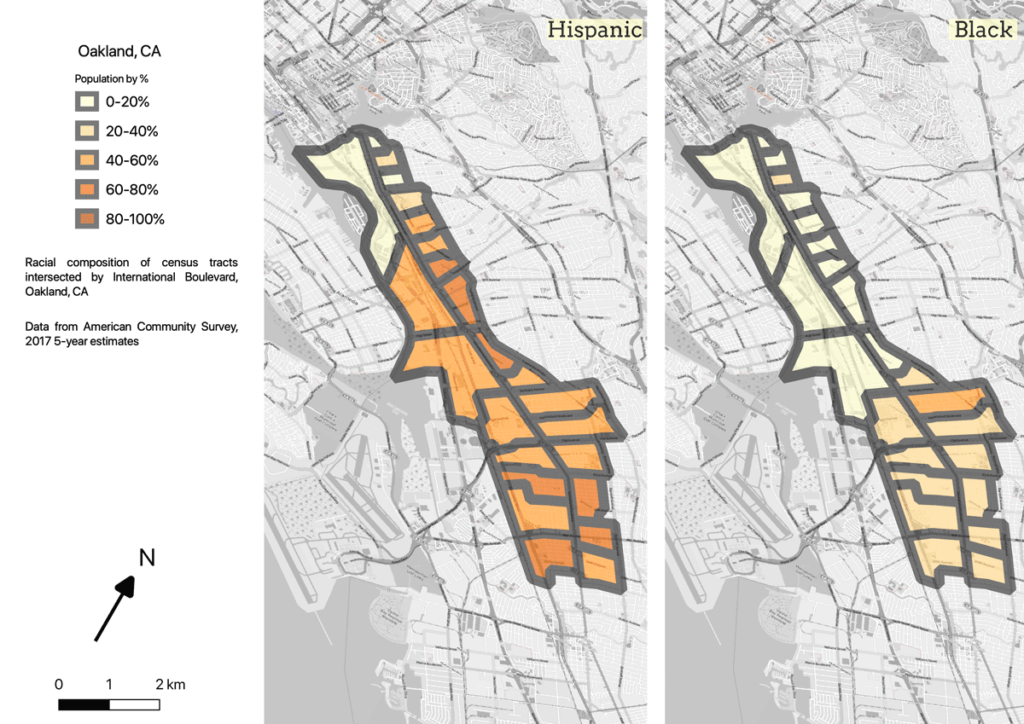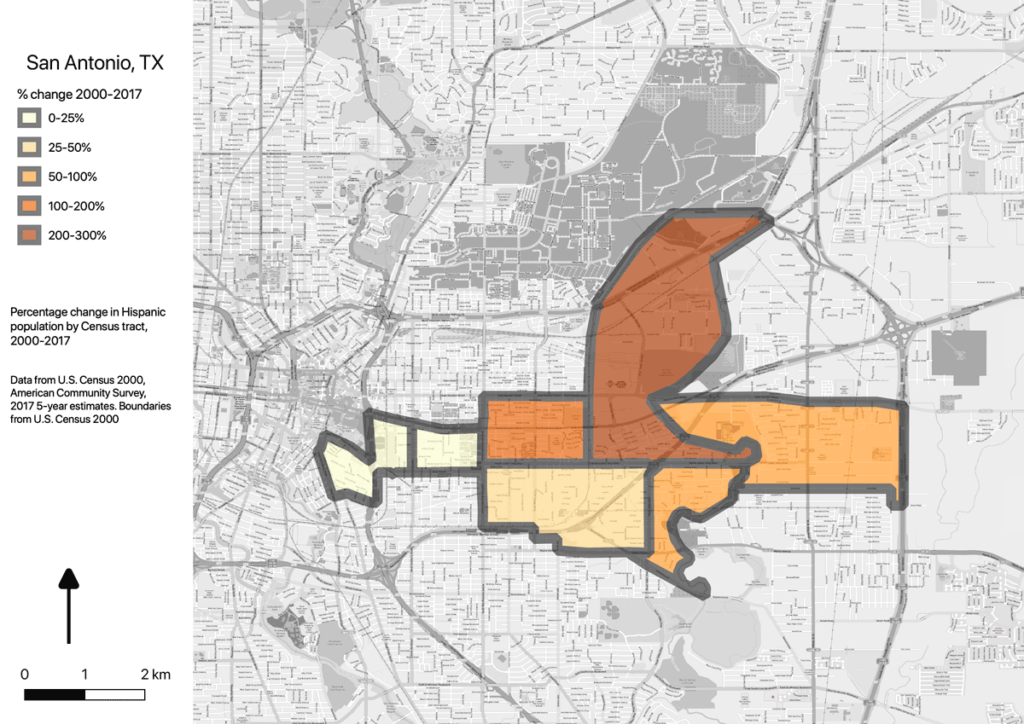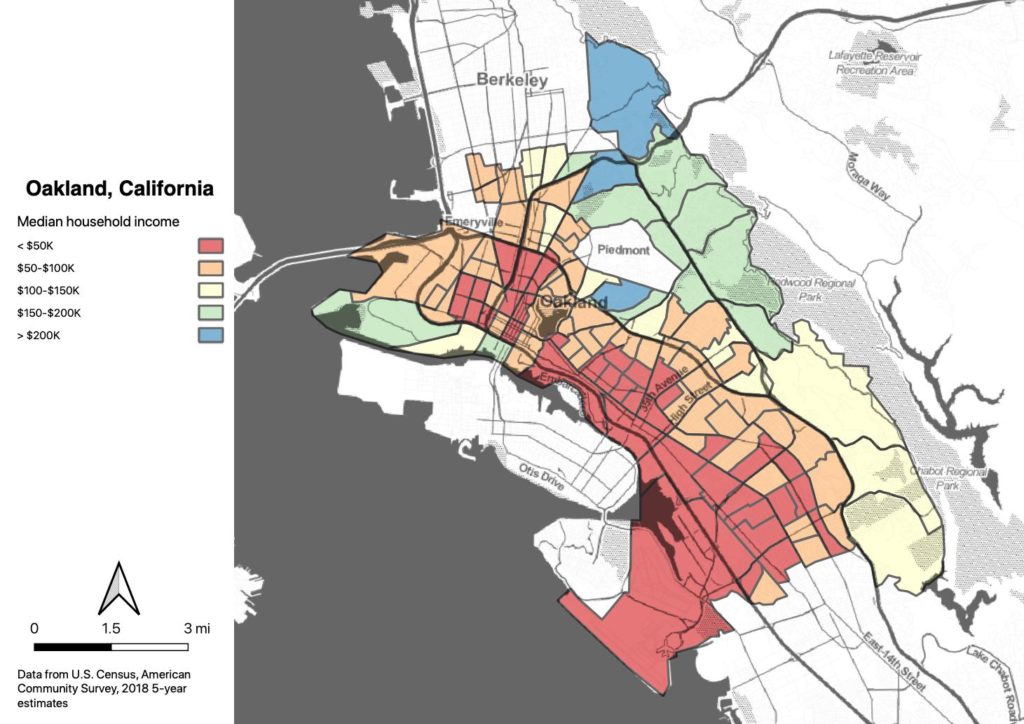To this point I’ve been mentioning only White and Black populations, but the most substantial demographic shifts nationally are among Hispanic populations. There has been a net influx of international Hispanics, and the natural population growth rate is also higher than Whites and Blacks.
As a population, Hispanics are wealthier than Blacks but still far less wealthy than Whites. In many cities, Blacks and Hispanics are now competing for whatever inexpensive housing exists. In these seven study cities, this manifests as an increase in total population, combined with a drop in Black population, a rise in HIspanic population, and a drop in real income.
| Total population change, 2000-2017 | Population change, Blacks, 2000-2017 | Population change, Hispanics, 2000-2017 | Real median income change (2018 $), 2000-2017 | |
|---|---|---|---|---|
| Anchorage, AK | 4,996 | -535 | 1,656 | -$1,472 |
| Atlanta, GA | 1,083 | -2.982 | 590 | -$6,089 |
| Boston, MA | 1,968 | -523 | 1,978 | -$12,833 |
| Detroit, MI | 872 | -1,153 | 289 | -$2,585 |
| Oklahoma City, OK | 382 | -1,235 | 1,371 | -$4,489 |
| San Antonio, TX | 5,973 | -1,377 | 6,937 | -$5,915 |
| Winston-Salem, NC | 381 | -924 | 759 | -$9,371 |
We already looked at the maps of Atlanta in Part 5: Resegregation. Obviously part of what is going on in those neighborhoods west of the stadium is an influx of poorer Hispanics.
San Antonio provides a more complete example.
This map is not colored by current population; it is the percentage change in Hispanic population in each Census tract since 2000. The western side of this map, near downtown San Antonio, has not changed very much, but the north and eastern segments have changed radically, with Hispanics doubling or even tripling since Y2K. At the same time, Blacks have been leaving these places, and the population growth is almost equivalent to the Hispanic increase less the Black decrease.
At the same time, median income has been falling, so this phenomenon isn’t displacement via gentrification. An optimistic view would be that the former residents found better opportunities elsewhere, leaving this housing available for new, poorer residents. A more realistic view is that poor Hispanics are competing for housing with even poorer Blacks.
The same dynamic is occurring on International Boulevard in Oakland. East Oakland, the home of MC Hammer, Too Short, Fantastic Negrito, and other major black artists, is often thought of as a black neighborhood, but the area around International Boulevard has become predominantly Hispanic in the past 20 years, while the median income has dropped by over $3,000.
International contrasts with MLK in Oakland. On MLK, Blacks are being displaced by wealthier individuals (predominantly Whites, but also substantial proportions of Asians and Hispanics). In Deep East, they are being displaced by individuals who are also poor.



